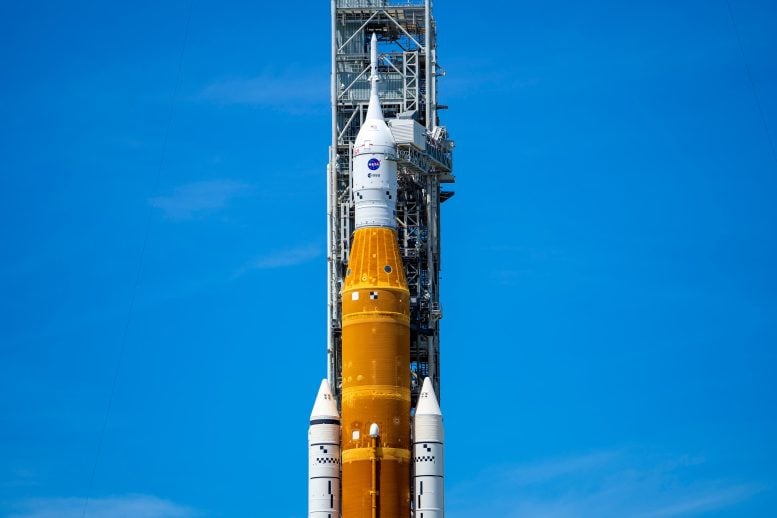El cohete del Sistema de Lanzamiento Espacial (SLS) de la NASA con la nave espacial Orion a bordo se ve encima del lanzador móvil en el Lanzamiento 39B en el Centro Espacial Kennedy de la NASA en Florida. Crédito: NASA/Sam Lott
Después de desconectar primero las placas laterales del suelo y del cohete en la interfaz, llamada desconexión rápidapara hidrógeno líquido línea de suministro de combustibleLos equipos ahora han reemplazado los sellos del sistema de lanzamiento espacial ([{» attribute=»»>SLS) rocket’s core stage associated with the liquid hydrogen leak detected during the Artemis I launch attempt on September 3.
Both the 8″ line used to fill and drain liquid hydrogen from the core stage and the 4″ bleed line used to redirect some of the propellant during tanking operations were removed and replaced this week.
Coming up next, technicians will reconnect the umbilical plates and perform inspections over the weekend. After that, they’ll begin preparing for a tanking demonstration as soon as Saturday, September 17. This demonstration will allow engineers to verify the new seals under cryogenic, or supercold, conditions that are expected on launch day, before proceeding to the next launch attempt.

The four RS-25 engines on NASA’s Space Launch System rocket produce more than 2 million pounds of thrust. The four RS-25 engines last fired during the core stage Green Run hot fire test at NASA’s Stennis Space Center near Bay St. Louis, Mississippi, in March 2021. Credit: NASA/Robert Markowitz
During the operation, teams will practice loading liquid hydrogen and liquid oxygen in the rocket’s core stage and interim cryogenic propulsion stage. They will work at getting to a stable replenish state for both propellants. Teams will confirm the leak has been repaired. They will also perform the kick-start bleed test and a pre-pressurization test to validate that the ground and flight hardware and software systems can perform the necessary functions required to thermally condition the engines for flight. Teams will review the test results and develop strategies for the next launch opportunity after analyzing the data.
También te puede interesar
-
La cápsula Starliner da un gran paso hacia el primer vuelo tripulado
-
Los satélites Tiandu de China realizan experimentos de transmisión y enrutamiento Tierra-Luna_China.org.cn
-
Esta semana en astronomía con Dave Eicher
-
Mercurio podría haber sido alguna vez tan grande como la Tierra, dice un científico
-
Se completa la construcción de la cámara astronómica digital más grande

